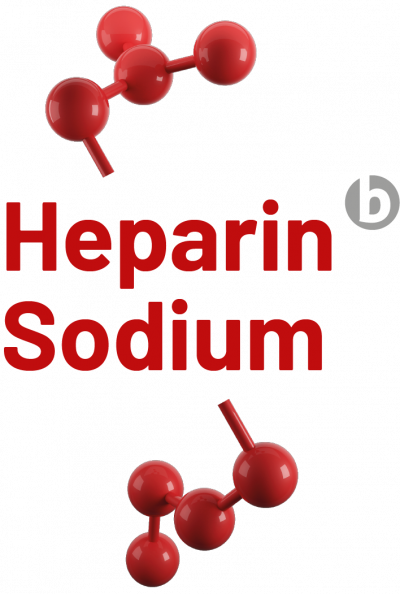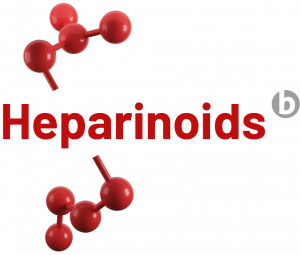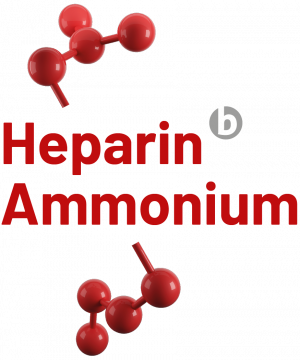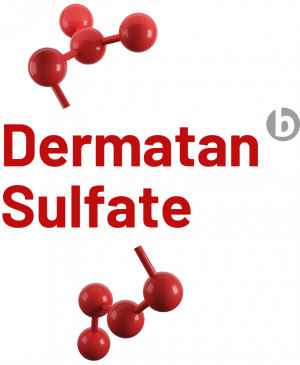
Heparin sodium
Sodium heparin is a widely tested product with a high safety and confidence profile. Sodium heparin belongs to the family of glycosaminoglycans, a group of linear polysaccharides, with negative charge, formed by alternating repeating units of an amino sugar and a uronic acid.
What is it? what is it for?
In the case of heparin, the amino sugar is D-glucosamine, that may be N-acetylated or N-sulfated, while the uronic acid may be L-iduronic acid or D-glucuronic acid.
Functional properties
Sodium heparin has multiple biological activities, but is noteworthy for its anticoagulant properties. This activity is the result of its interaction with various blood proteins that are coagulation inhibitors; among them and mainly Antithrombin III (ATIII).
The heparin acts as catalyst, accelerating the velocity at which ATIII inhibits various procoagulant proteins, notably factors Xa and IIa (Thrombin). In this way, heparin prevents the formation of fibrin, one of the key components of a clot.
Applications
For the treatment of:
- Acute myocardial infarction
- Prophylactic and curative treatment of arterial and venous thromboembolism
- Pulmonary embolism
- Prevention of pulmonary and deep venous thromboembolism during pregnancy
- Peripheral artery diseases
- Atherosclerosis
- Extracorporeal circulation (ECC)
- Anticoagulant coating for medical devices
- Hemodialysis
- Extracorporeal therapies such as heart-lung oxygenation and hepatic dialysis
- Open heart surgery
- Deep phlebitis
- Vitreoretinal surgery
- Topical applications for ulcer treatment
- Topical applications for treatment of varices
New research
A large number of new biological activities are currently being investigated. Because of its structural complexity and its great biological interaction capacity, heparin and its derivatives are molecules with a huge potential for development of new drugs. The activity of sodium heparin is currently being studied in the treatment of a wide range of diseases:
- Cancer
- Chronic obstructive pulmonary disease (COPD)
- Organ transplantation
- Allergic encephalomyelitis
- Allergic rhinitis
- Arthritis
- Asthma
- Irritable bowel syndrome
- Pulmonary emphysema
- Interstitial cystitis
- Cystic fibrosis
- Malaria
- Inflammatory syndromes
- Burns
- Ischemia
- Ulcerative colitis
Specifications
- Active Pharmaceutical Ingredient (API) as a white powder that complies with EP, USP, and JP monographs.
- Product of animal origin; 100% porcine from Europe, North America, South America
- Unfractionated heparin with molecular weight between 15,000 and 19,000 Dalton.
- Production certified by GMP and inspected by the USFDA
- CAS No. 9041-08-1
Heparin Sodium EP Specification
Storage and Packaging
Storage and handling conditions
The product does not require special storage conditions, however we recommend that it be kept in a cool, dry place preferably at temperatures below 40ºC.
Handling Instructions
Wear a dust mask, gloves and safety goggles.
Packaging
The API as white powder is triple-packed in polyethylene bags sealed with a polyamide cable tie for drums and cans.
The product is available in the following containers according to the quantity and customer specifications:
- Drums of 60L, 30L, 2L , 15 ml vial and 100ml vial.
- The weight limit of our drums is 20 kg net.
- All the containers are fitted with security seals to prevent any potential tampering.

Material safety data sheet
The material safety data sheet is the same for heparin sodium and its derivatives such as heparin ammonium, heparin lithium, dermatan sulfate and heparinoids.
Material safety data sheetCertifications





